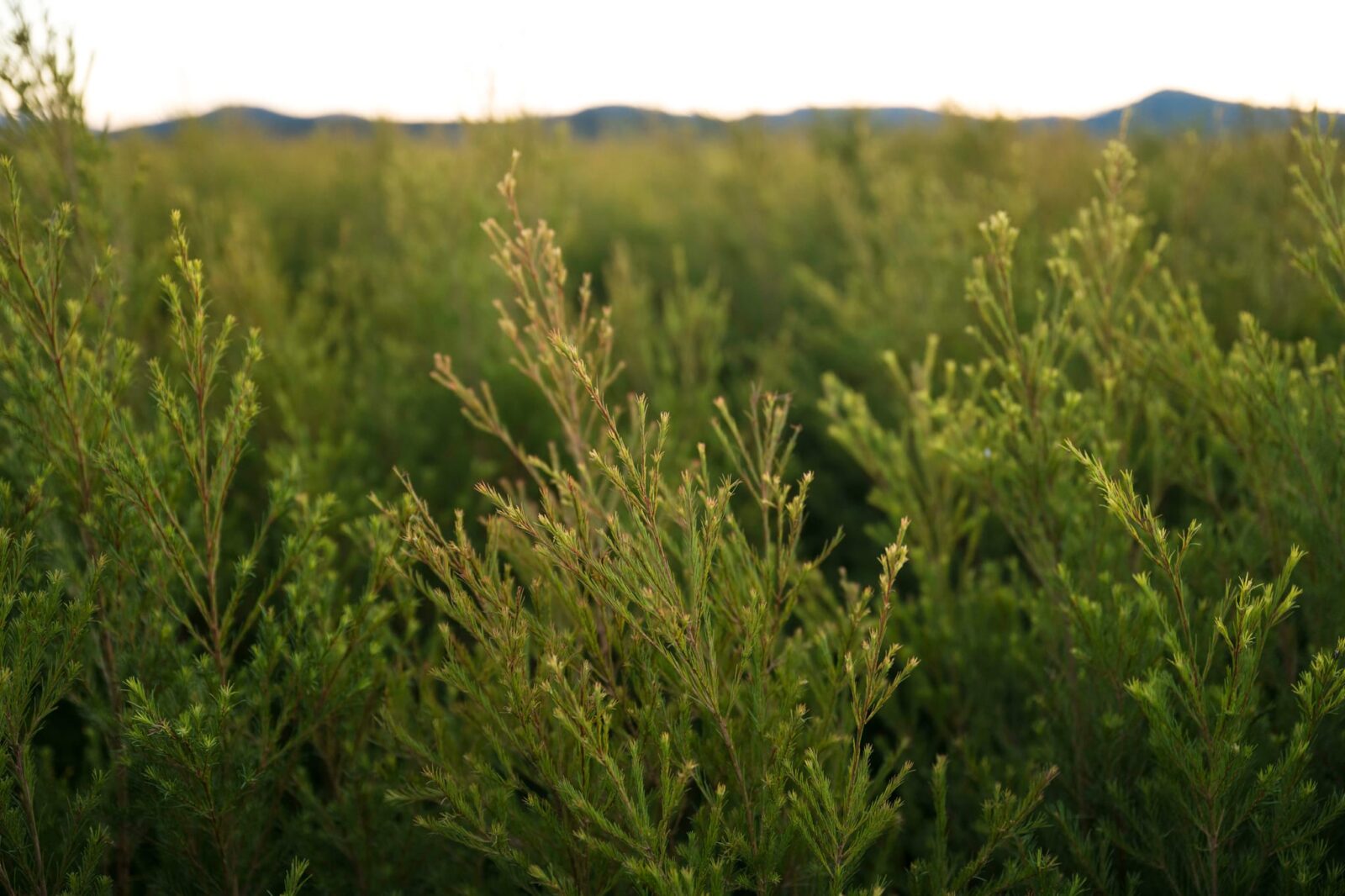Building a healthier future for sheep: Meet Horizon Scholar Chloe Frank
 TEA TREE OIL / Monday, 11 March 2024
TEA TREE OIL / Monday, 11 March 2024
Respiratory viruses fall victim to tea tree oil’s virucidal vigour

Deeper understanding of the anti-viral activity of tea tree oil opens doors to animal and human health applications.
While tea tree oil is relatively well-known for its ability to treat a range of bacterial and fungal infections, new research has confirmed the homegrown essential oil could also be a valuable tool in the fight against respiratory viruses in livestock and humans.
Numerous studies have revealed tea tree oil has a broad spectrum of activity against pathogenic bacteria and a variety of fungi, yet its potential as an anti-viral agent was — until now — relatively untapped.
In response to industry demand, Dr Padraig Strappe and a team of researchers at Curtin University took a multi-pronged approach to investigate the role tea tree oil might play in managing viral infections.
“An increasing focus on the efficacy of natural products to combat infectious agents is driven by a need for alternative approaches and consumer demand for natural products to avoid side effects,” Padraig explained.
“The coronavirus pandemic has heightened public awareness of the processes involved in disease transmission, and the range of ways to reduce transmission — social distancing, mask wearing, hand hygiene and regular cleaning of high touch surfaces — are now common knowledge.
“But naturally sourced products with demonstrated anti-viral efficacy are increasing in popularity as they have few side effects.”
While some work has already been undertaken on the virucidal activity of tea tree oil, Padraig and his team wanted to expand on existing knowledge and explore the potential for novel formulations, such as nanoemulsions and vapour.
“We wanted to examine the effects of tea tree oil on viruses we haven’t studied before and determine whether there are differences in the susceptibility of viruses,” he said.
“We also wanted to test the efficacy of different concentrations and delivery methods.”
Initial investigations focused on determining the concentrations of tea tree oil that could be effective against viruses but with minimal cytotoxicity (i.e. damage to living cells, such as skin).
“The challenge is to find a solution that is strong enough to deactivate the viral agent, yet safe enough to handle,” Padraig said.
“We tested the viability of a range of cell lines after exposure to tea tree oil and determined that concentrations above 5% were cytotoxic.
“This meant we generally worked at concentrations of 5–10% or lower as tea tree oil can be toxic to the skin at high concentrations and we have to be careful to use it at non-toxic concentrations.”
Using a methodology recognised by the Australian Therapeutic Drugs Administration (TGA), the team tested the anti-viral properties of tea tree oil against a range of virus types, with emphasis on viruses transmitted by the respiratory route or by encountering contaminated surfaces.
Investigation yields deeper understanding of anti-viral action Padraig said the viruses could broadly be divided into two groups — enveloped viruses, where the virus is encased in a lipid layer, and non-enveloped, or naked, viruses.
Tea tree oil proved to be effective at inactivating lipid-coated viruses, but not as effective against those without a lipid envelope, such as enteroviruses. These findings confirmed those of previous studies and led the team to focus on enveloped viruses.
“The good news is this category of enveloped viruses covers a lot of respiratory viruses, such as bovine pneumonia and SARStype coronaviruses,” Padraig said.
Bovine herpes 1 (BHV1) was inactivated by a 10% solution of tea tree oil in a 15-minute period. Respiratory syncytial virus (RSV) — the human influenza virus — also contains a lipid bilayer envelope and was sensitive to a 10% tea tree oil solution, although an increased incubation time was necessary.
“The effects of tea tree oil on the SARS-CoV-2 coronavirus had not been previously described. In our study, a concentration of 10% inactivated the virus following an incubation time of between 30 and 45 minutes,” Padraig said.
“In contrast, the human coronavirus NL63 was inactivated with a 10% tea tree oil solution within a 15-minute period.”
Nanoemulsion delivers low-concentration option. The team also explored various formulations of tea tree oil, including a nanoemulsion and tea tree oil vapour.
“Essentially, we packaged the tea tree oil in a low concentration stable solution using an emulsifying agent, which allowed us to use a less-active ingredient — in this case tea tree oil — yet achieve the same anti-viral impact,” Padraig said.
“For example, a 1–2% solution nanoemulsion was able to inactive the herpesvirus, compared with the 10% solution needed for standard tea tree oil.”
Although results for the anti-viral activity of tea tree vapour were inconclusive, Padraig said he is keen to explore this avenue further.
“The project has allowed us to better understand how tea tree oil works against viruses to deactivate them and has provided insights into potential applications in both animal and human health settings,” he said.
“I think it is important we do discovery work with natural products as we might find more efficient ways to deactivate viruses or uncover something quite novel in plant extracts or oils, and we might find an active ingredient we haven’t yet discovered.”
Latest News
-
Building a healthier future for sheep: Meet Horizon Scholar Chloe Frank WORKFORCE AND LEADERSHIP / 11.03.24
WORKFORCE AND LEADERSHIP / 11.03.24 -
One year review: Embracing new ways to evaluate the risks of yearling endoscopy THOROUGHBRED HORSES / 11.03.24
THOROUGHBRED HORSES / 11.03.24 -
How Isabelle Duff aims to drive genetic innovation in agriculture WORKFORCE AND LEADERSHIP / 11.03.24
WORKFORCE AND LEADERSHIP / 11.03.24 -
AgriFutures Australia welcomes new Chairman CORPORATE / 11.03.24
CORPORATE / 11.03.24






